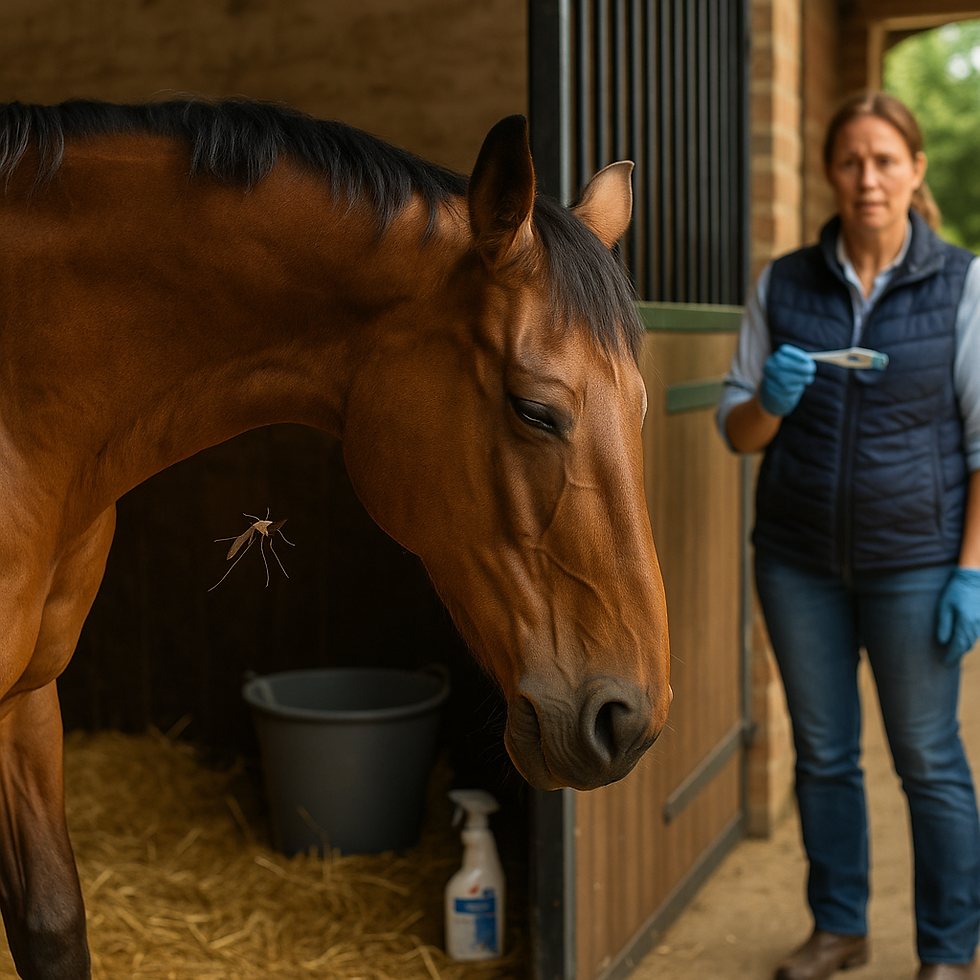choke in Horses: What It Is, How to Spot It, and What to Do
- Midnight Blue Equestrian

- Jul 19
- 2 min read

Choke is a frightening but relatively common condition in horses that every owner and yard manager should be aware of. Despite its name, equine choke is not the same as choking in humans—horses can still breathe during an episode—but it is an emergency that requires calm, prompt action.
What Is Choke?
Choke occurs when food or a foreign object becomes lodged in the horse’s oesophagus, partially or completely blocking it. This prevents the horse from swallowing but does not block the airway, so they can usually still breathe. However, it can lead to serious complications, including aspiration pneumonia, if not treated correctly.
Common Causes
Choke is most often caused by:
Eating too quickly (greedy feeders)
Dry feed not properly moistened
Pellets or beet pulp that expand with moisture
Poor dental condition or difficulty chewing
Foreign objects like bedding or wood chips accidentally swallowed
Symptoms of Choke
A horse experiencing choke may display the following signs:
Coughing or gagging
Extending the neck or holding it in a strained position
Nasal discharge containing feed or saliva (often green or frothy)
Drooling or salivating excessively
Anxiety, restlessness, pawing at the ground
Attempting to eat or drink but being unable to swallow
What To Do (and What NOT to Do)
Do:
Remove all food and water immediately to prevent further aspiration.
Keep the horse calm and quiet—excitement can make the blockage worse.
Call your vet as soon as possible.
Monitor for breathing difficulty—although rare, it may signal complications.
Do NOT:
Do not attempt to flush the mouth with water or force the horse to drink.
Do not insert your hand into the horse’s throat—this could cause injury or make the blockage worse.
Do not assume the choke is over just because the horse appears calmer—residual damage or risk of infection remains.
Veterinary Treatment
Your vet may:
Sedate the horse to relax the oesophagus
Pass a nasogastric tube to dislodge or flush the blockage
Administer anti-inflammatories or antibiotics
Recommend a dental exam or dietary changes
In some severe cases, endoscopy or hospitalisation may be required.
Recovery and Aftercare
After an episode of choke:
The horse may need a soft, mash-based diet for several days
No hay, hard feed, or turnout until cleared by a vet
Watch closely for signs of aspiration pneumonia—coughing, nasal discharge, fever
Prevention Tips
Always soak feeds like sugar beet or pellets thoroughly
Feed smaller meals, more frequently
Use slow feeders or ground-level buckets
Regular dental checks (at least annually)
Avoid feeding straight after strenuous exercise
Final Thoughts
Choke can be scary, but with quick action and veterinary support, most horses make a full recovery. Prevention is key—especially for older horses or those with dental or feeding issues.
At Midnight Blue Equestrian, we take feeding management seriously. From routine dental checks to safe feeding setups, we aim to keep every horse happy, healthy, and choke-free.



Comments